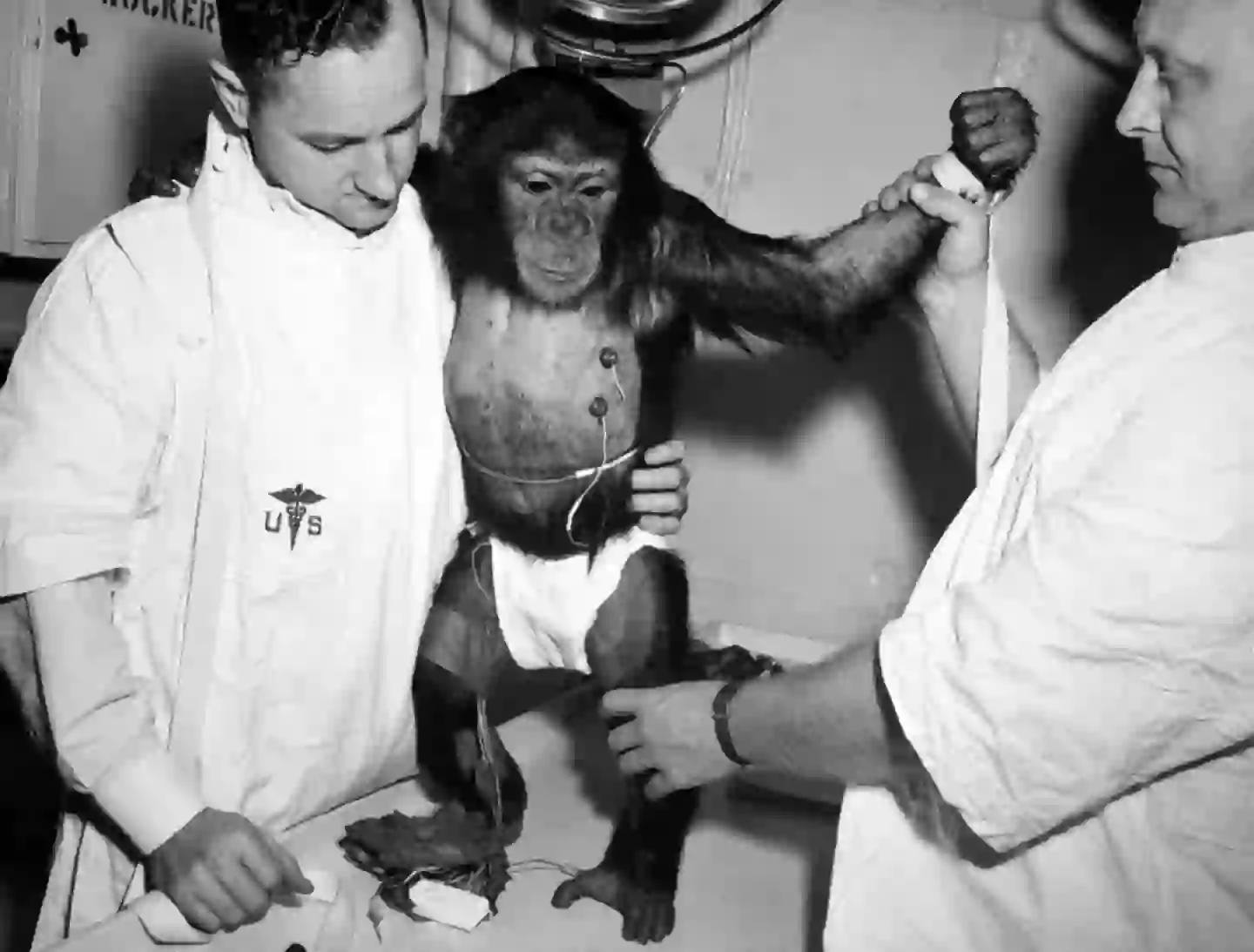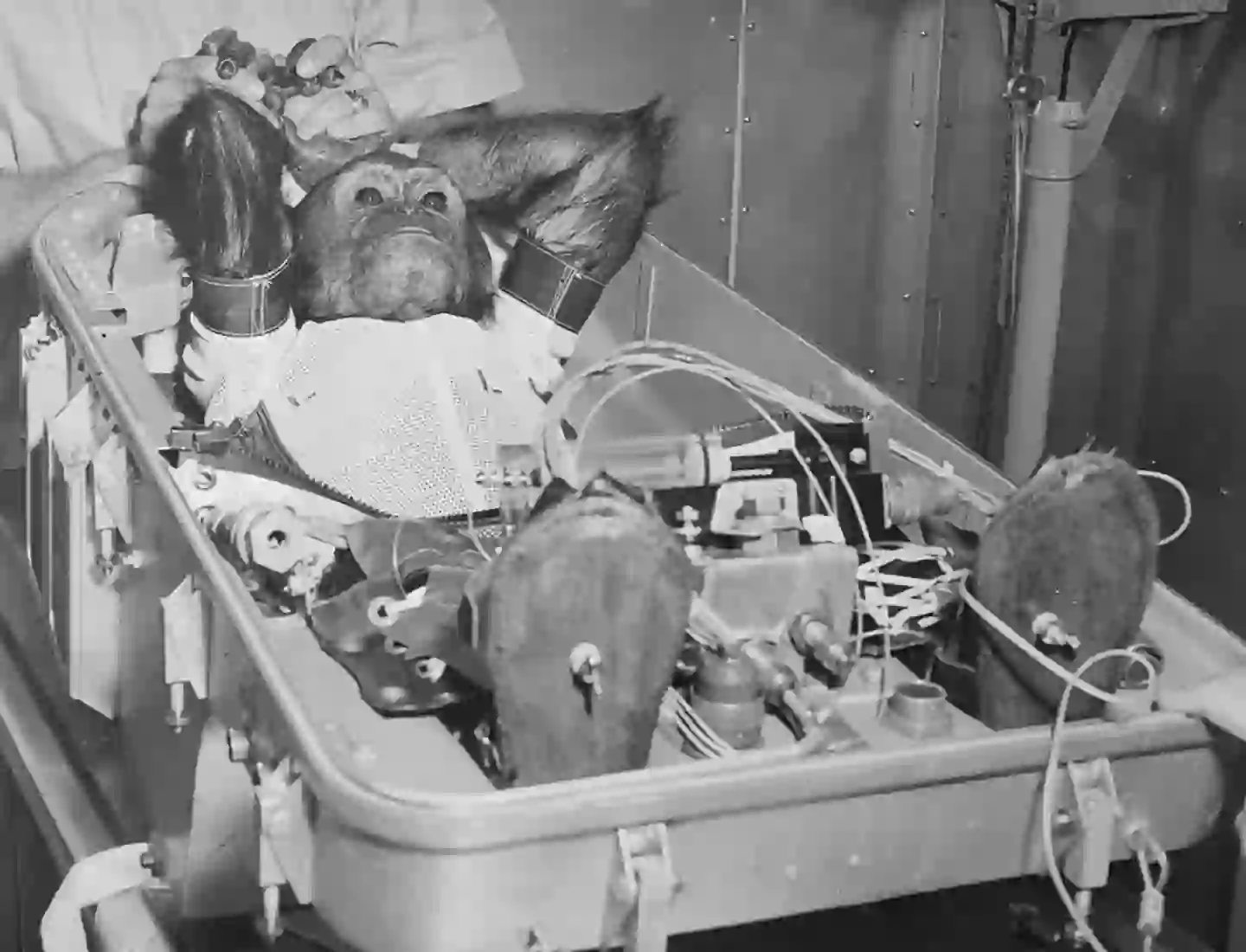
The first chimpanzee to head into space was fighting against the odds from the start.
He was born in 1957 in Cameroon and was among the 40 great apes captured and sold to the Holloman Aerospace Medical Center in New Mexico in 1959.
He was later selected for the Mercury Project to study space effects on humans and ensure safe re-entry and recovery.
Advert
Initially known as 'Number 65', he was renamed as 'Ham' after the centre's initials, where he underwent training such as learning to pull levers in response to sound and light, according to the National Air and Space Museum.
On 31 January 1961, Ham was then launched into space aboard the Mercury-Redstone 2 mission.

During the 16.5-minute suborbital flight, he experienced weightlessness and high g-forces, yet managed to perform tasks at a high enough level.
However, Ham's mission was not without problems after a technical malfunction caused the capsule to overshoot its intended trajectory, landing 130 miles off-target in the Atlantic Ocean.
Advert
According to the book, 'A Brief History of Animals in Space' published by NASA's History Office, Ham 'experienced a total of 6.6 minutes of weightlessness during a 16.5-minute flight'.
READ MORE:
HEARTBREAKING MYSTERY OF THE FIRST EVER SPACE DOG WHO WOULD 'NEVER COME BACK TO EARTH'
NASA UPGRADES CHANCES OF ASTEROID HITTING EARTH IN SEVEN YEARS IN 'HIGHEST RISK EVER'
Ham's capsule took on water and it took several hours for the rescue crew to get there, though luckily, Ham survived.
Advert
According to the post-flight report (via the National Air and Space Museum): "Robert F. Wallace, an STG information officer on the scene, reported that Ham was excited when returned to Hangar S after his flight.
"Being unable to debrief his handlers, Ham alone knew at this time how gruelling his flight had been. Flashbulbs and crowding newsmen made him highly agitated, and he snapped at several people.

"Later, when his handler led him back toward a capsule for pictures requested by the TV crews, Ham again became highly perturbed. It took three men to calm the ‘astrochimp’ for the next round of pictures."
According to The Guardian, Ham was found to be largely unharmed, aside from his fear following his flight.
Advert
Ham was transferred to The National Zoo in 1963, where he lived by himself for 17 years, before being sent to the North Carolina Zoo to be with other chimps.
He died on 18 January, 1983, at the estimated age of 26.
Pictures of him during training went viral on Reddit, with one person writing: "Space history is full of unsung heroes, and this little astronaut is one of them."
Another said: "Thank you for your service, Ham. All life on Earth owes you a debt of gratitude."
Brian Odom, NASA's chief historian, told USA Today in January that Ham's experience was 'important' for space travel as we know it today.
Advert
He said: "We can't forget about Ham and how important his experience was to telling us what we needed to know to get that confidence to put a human in space and to continue on, which would ultimately lead to the success of Apollo in July of 1969."